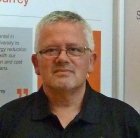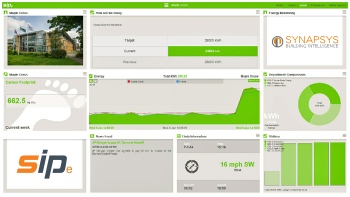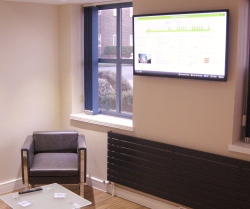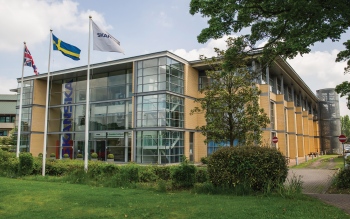Putting big data to practical use

Being able to draw on information from a variety of source makes it possible to run buildings more efficiently. But how to handle all that data and put it to best use? Matt Gardner of Synapsys Solutions, explores the world of big data.
Better information is supposed to make life easier, isn’t it? The trouble is, it’s all very well having it, but all too often today’s ‘big data’ simply seems to present us with the problem of how best to use it. But pulling complex information from a BMS together into a useful format is about to become even easier, and making this information public can make a real difference to a building’s energy performance by encouraging behavioural change.
A typical intelligent building with a BMS will draw data on energy performance from a wide variety of sources. Some information comes from within the BMS; some currently is imported from outside the BMS but in an ideal world would be captured by that central system; and some is contributed from completely separate systems.
 |
| Synapsys’ energy-monitoring system features a customisable dashboard to give easy access to real-time energy-performance information |
How do you physically integrate these systems? Of course, there has to be a certain degree of ‘nuts-and-bolts’ engineering skill involved in the set-up, but it helps if once the system is up and running it can present performance information in an easy-to-read format that’s also accessible to non-engineering departments around the organisation — such as those who work in finance or who have responsibility for day-to-day facilities management.
The circulation of clear, user-friendly information on energy performance can also be key to fostering behavioural change. Users inevitably present the biggest challenge to tackling energy consumption; it doesn’t help that the user is usually nothing to do with the unpleasant surprises delivered by the energy bill.
Getting people to turn the thermostat down rather than opt for the quick fix of opening the nearest window can be surprisingly difficult to achieve. The more users a building accommodates, the tougher the job of convincing them to change their habits.
An information screen in a public area to give easy-to-read real-time information on energy use helps give the abstract a ‘real-world’ accountable value — bringing cause and effect back into sharp focus. It’s an ideal way to bring the issue of energy use out of the estates office and into the everyday life of the establishment.
 |
| Public displays of energy performance information communicate energy information to building users. encouraging them to think about how energy is used in their building. |
An example of energy monitoring in action is how construction group Skanska is using a Synapsys SIPe energy-monitoring system with public information screens at its Hertfordshire headquarters. Not only does the system show Skanska ways in which it can better manage its own energy use, but it is also useful to demonstrate to customers how the group can work with them in the field of environmental best practice.
The system monitors approximately 30 measuring points around the estate and its systems. Key performance information is presented in a graphical format, ideal for creating interesting and thought-provoking public displays — which can also include a video player, RSS feed and images. Skanska uses these public displays to increase employees’ awareness of energy consumption, track performance against targets and directly communicate green solutions and initiatives being implemented.
Taking this concept a stage further, the next hot topic in energy management is the use of data analytics, which can help organisations make the transition from reactive to proactive energy management.
This approach harnesses today’s big data — the screeds of seemingly unrelated data churned out by a bewildering array of different sources around a building or estate and presented in a number of different formats. All the data is then collated to reveal patterns, trends and anomalies.
Constant 2-way communication between the BMS and an external data-analytics partner makes the detailed analysis of performance data and the honing of control strategies automatic —one less thing to worry about. Data is exported to the analytics provider, where control strategies are automatically formulated. They are then uploaded back to the building-management system so it can make adjustments; importantly, this process is continuous, enabling building systems to constantly perform at the optimal settings.
 |
| Construction group Skanska is using a Synapsys energy-monitoring system to find ways in which it can better manage its energy and also to demonstrate to customers how the group can work with them in the field of environmental best practice. |
Using data analytics enables facilities managers and estates departments to plan further ahead, rather than reacting to problems that have already occurred and only been picked up retrospectively by anomalies in the performance data. For example, a gradual decline in performance could indicate equipment nearing the end of its life, enabling planned maintenance to be scheduled rather than waiting for the inevitable failure and emergency repair or replacement — with all its associated inconvenience.
Integrating and interrogating the big data that’s typically available from building systems is the next major challenge for business. Lots of organisations are already trying to do this. Equally, many other organisations want to tap into the potential of the data that has been collected, but don’t know where to start.
The good news is, by combining an energy-monitoring system with data analytics, it’s easier than you might think to get to grips with all this performance information. The information can be put it into a format where it can yield real benefits, both in terms of developing building control strategies for improved energy efficiency and in prompting building users to think twice before turning the heating up.
Matt Gardner is business-development manager with Synapsys Solutions.








